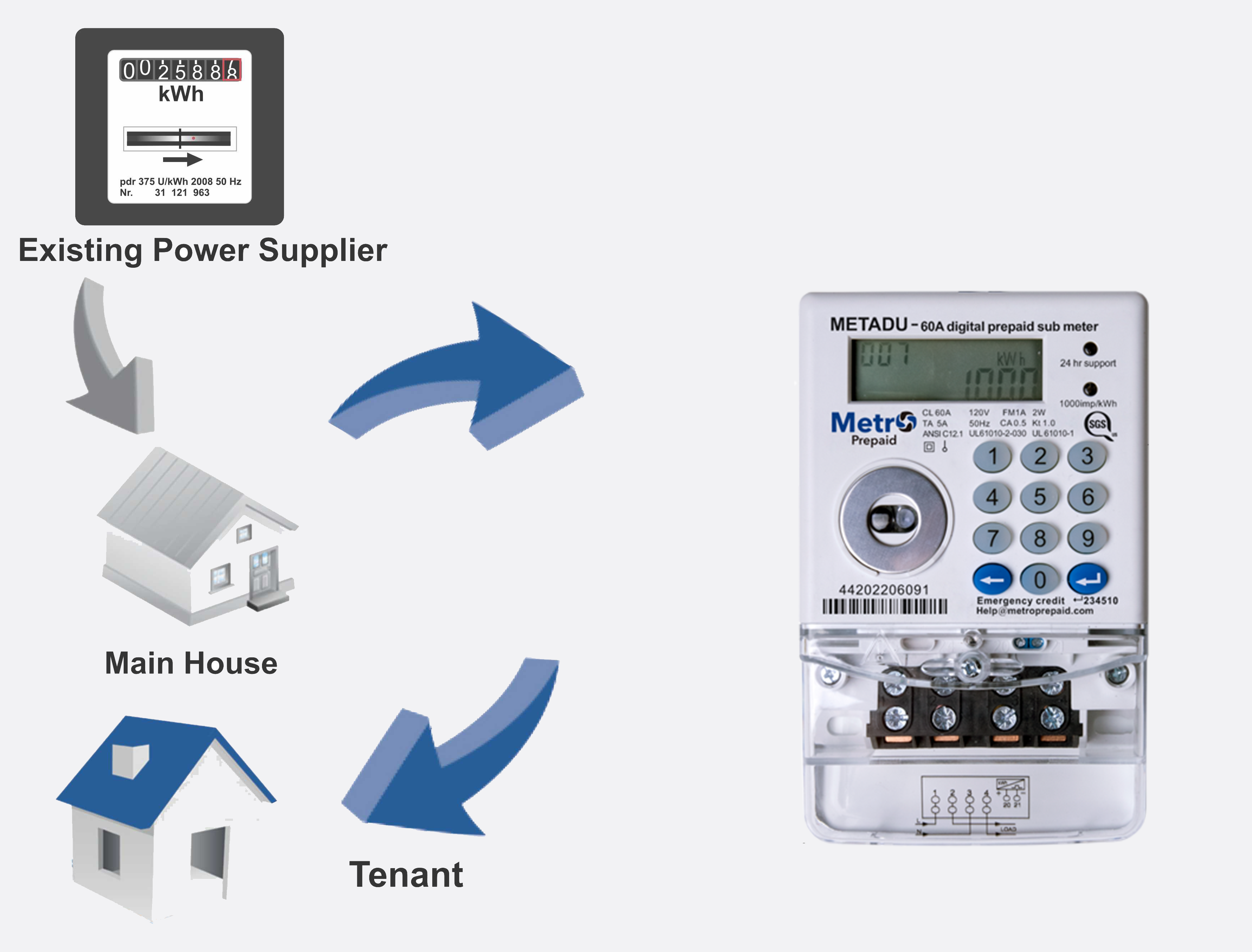Electric Sub Meters for Landlords
Electric sub meters for landlords are popular in ADUs as a way to accurately track individual energy usage and allocate costs fairly. However, while these landlord meters can bring many benefits, they can also pose challenges for owners and tenants alike.
This is the third part of a series of articles where we continue to explore the experiences of Jim Haliburton, who installed Metro Prepaid electric sub meters in his properties, sharing insights and lessons learned along the way. He is an experienced landlord with over 100 ADUs and 1000 tenants.

What can you charge for electricity when using electric sub meters?
With electric sub meters for landlords, you set the charges as you wish but by law you are not allowed to make a profit. For fairness, I keep the charge for electric at less than the highest tariffs being offered by suppliers, which is currently over 63c per kilowatt (January 2023). The lowest charge is about 25c per kilowatt but there are high standing charges at the cheapest rates, so it makes the actual cost of electricity per kilowatt difficult to calculate.
I know electricity companies are not allowed to turn off the supply of electric to residential occupiers. Would using an electric sub meter be seen as disconnecting the supply for a tenant, if they are unable to pay?
If a tenant fails to maintain sufficient credit on the sub meter, then they effectively disconnect themselves and this is permissible. Landlords are not permitted to disconnect a tenant, for example, cutting the supply to the room or property if the tenant does not pay their rent even if the utilities are included. I appreciate it is a subtle distinction and the effect is the same as the tenant no longer has electricity, but one way is legal the other is not. What utility companies are allowed to do but a landlord CANNOT do is to fit prepay meters and recover outstanding debt by charging an amount every week. Utility companies can in my experience charge as much as $26 per week to recover utility debts.
When fitting electric sub meters for landlords, is it expected that tenants will have a given amount of electricity per month, or do they pay for all the electric they use?
We usually get the tenant to pay for all electric and no allowance is given. It is only when we introduce meters to an existing tenant who objects that we give anything. One of the ways of persuading them to allow a sub meter to be fitted is to give them a once off credit of $26 to start with. With new tenants, no allowance is usually given unless we house contractors and their company is paying, in which case we keep their meters topped up. Another way to persuade an existing tenant to allow a meter to be fitted is to give them a choice of $13-$26 a week rent increase or have a meter fitted. They always opt for having a meter fitted.
How do tenants pay when a Metro Prepaid meter is fitted? Can this be done at the meter, online, or do they need to approach the landlord?
The big advantage of fitting Metro Prepaid electric meters over other brands is the administration of selling electricity is done by Metro Prepaid meters. The tenant can pay online, direct to Metro Prepaid meters or go to any PayNearMe outlet. Metro Prepaid meters do all the administration by sending the landlord a monthly account, a month in arrears, which shows each individual meter in the property and what has been paid by the tenant.
Where to buy your Metro Prepaid Electric Sub Meters for Landlords?
Metro Prepaid electric sub meters are available online or from selected electrical wholesalers across the USA. Please visit our Products page to purchase our electric sub meter or all us on 571 933 8557 to find out where to buy electric sub meters in your area.